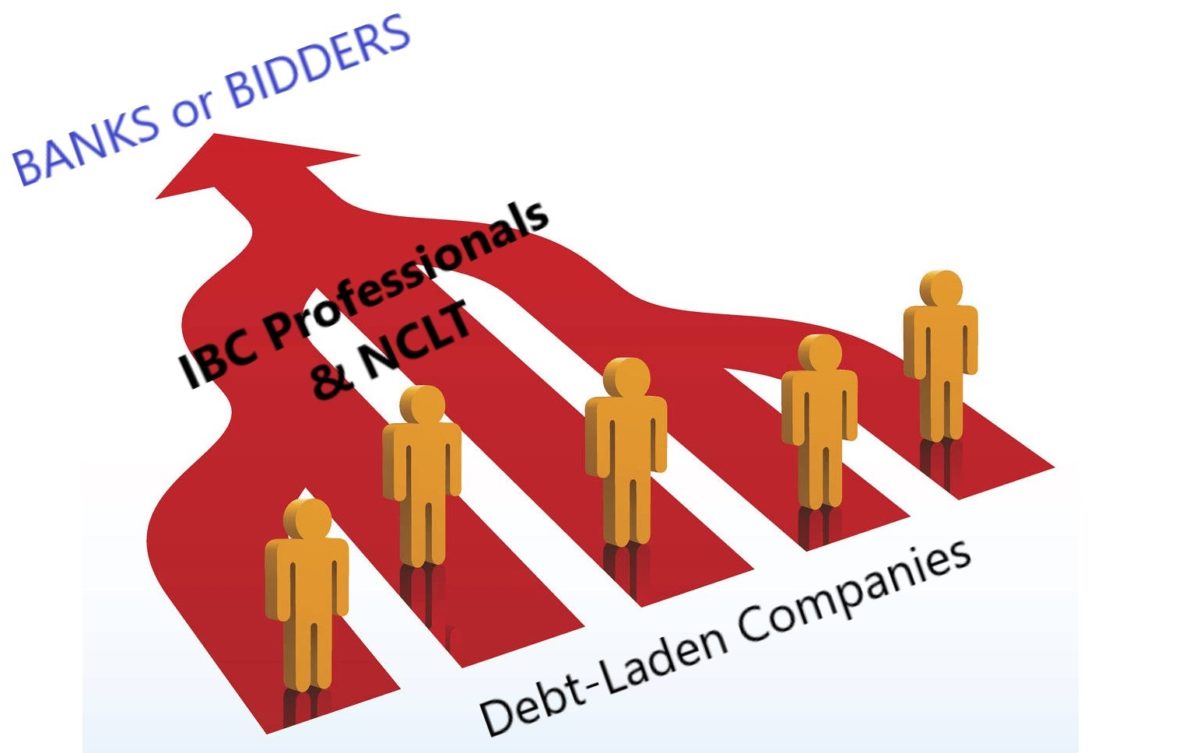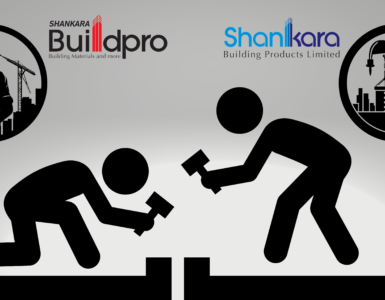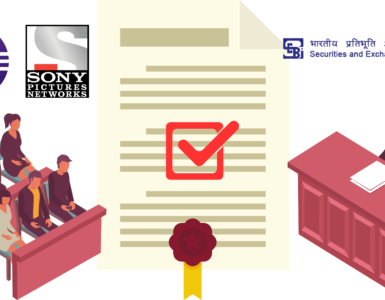Ever since the government introduced the bankruptcy law, host of companies right from steel, power, cement and construction have put their distressed assets on sale and potential bidders are chalking out deals to snap up assets of loan defaulting companies. The wave of deal-making can push mergers and acquisitions (M&A) at a record high level this year.
With banks pushing for change in management of loan defaulting companies, that will result in bigger corporate assets which will be available for acquisition at a throw-away price. Swift, time-bound resolution or liquidation of stressed assets will be critical for de-clogging bank balance sheets and for efficient reallocation of capital. Stressed assets are in multiple sectors, so M&As are expected to happen in multiple sectors.
Rising stressed assets with banks
The Reserve Bank of India has mandated early bankruptcy resolution of 12 cases, which account for a bulk of the stressed assets of banks. These cases are in advanced stage of auctioning assets at National Company Law Tribunal (NCLT) courts. These cases have NPAs worth about Rs 2.5 trillion. Cases in NCLT are also piling up since the Insolvency and Bankruptcy Code (IBC) came into effect from December 2016. Overall, banks have Rs 10 trillion in stressed assets of which Rs 7.8 trillion is bad loans and Rs 2.2 trillion of restructured ones. The government’s plan to inject Rs 2.1 trillion into state-owned banks in two years should give the lenders sufficient capital to write off bad loans weighing down their balance sheets.
During the boom period, many companies in sectors like real estate, power, infrastructure expanded their business by borrowing heavily. Companies got funding from banks at cheaper rates, private investors pumped in money in the business and foreign investors, too, bought their greenbacks. In many cases, companies ended up biting more than they could chew, which led to debt in balance sheets and wide-scale default. However, with the slowdown in the economy, many companies could not keep their revenue stream going and instead started selling their non-core assets. The situation got complicated as various government policies changed and there were a lot of activism over environmental issues by non-governmental organisations. Many loans given by banks turned bad assets and the recovery process just did not happen.
In the past, promoters had an upper hand in dealing with lenders which led to multiple players in many industries operating at sub-optimal scale and low return on investment. The primary objective of the IBC was to give banks a tool to resolve growing problem of bad debts as banks were not able to shut loss-making companies and collect their dues. In fact, India is number 103 in the World Bank’s ranking of how nations handle insolvencies. The plethora of laws that were supposed to resolve stressed assets only resulted in delays often more than five years. But now with IBC, cases admitted will be resolved within 270 days. If there is no resolution, then the company will have to be liquidated. And during the resolution phase, management control is taken away from promoters and given to the resolution professional.
Bid for Bhushan Steel
Bhushan Steel is the biggest bankrupt company to go under the hammer. There are talks that Tata Steel will acquire Bhushan Steel Ltd and Bhushan Power. Investors fear that it will stretch Tata Steel’s balance sheet as it happened when it bought over Corus Plc in the UK. As the deal did not yield any result, several restructuring attempts and asset impairment write-offs later, the European operations are set to move into a joint venture with ThyssenKrupp AG. In a filing to BSE, Bhushan Steel has said that as a part of the resolution process, the resolution professional has received plans from Tata Steel, JSW and employees of Bhushan Steel. The resolution professional has set the liquidation value at Rs 15,000 crore, below which no bid will be accepted.
News reports indicate that Tata Steel is offering an upfront payment of Rs 35,000 crore for Bhushan Steel for its financial creditors of Rs 17,000 crore for Bhushan Power. While this adds to Rs 52,000 crore, buy after paying operational creditors and funding working capital, the amount may increase to Rs 69,000 crore. At the financial creditor’s level, it translates to a haircut for the lender of 38% for Bhushan Steel and 63% for Bhushan Power. The haircut in Bhushan Steel’s case seems to be less. Bhushan Steel has plants at Ghaziabad in Uttar Pradesh, Khopoli in Maharashtra and Dhenkanal in Odisha. The company has net debt of Rs 49,958 crore as of March 2017. It reported a net loss of Rs 3,615 crore in 2016-17 on net sales of Rs 13,703 crore.
So, why is Tata Steel interested in both the Bhushan companies? The bankrupt Bhushan Steel’s capacity is 5.6 million tonnes while that of Bhushan Power is 2.3 million tonnes. Both the companies have expansion plans and the existing capacity is quite significant as Tata Steel has recently announced plans to expand its Odisha steel capacity by 5 million tonnes in the next four years. Even there is location advantage as both the Bhushan plants are in Odisha where Tata Steel’s new steel plant is located.
Other metal giants under the hammer
Essar Steel and Electrosteel Steels are the other big metal companies undergoing the bankruptcy process. Essar Steel is facing claims of Rs 49,000 crore from financial creditors and is among the 12 large companies that the Reserve Bank of India had directed banks to refer to bankruptcy court in June last year. Arcelor Mittal and Numetal have submitted bids to buy the assets of bankrupt Essar Steel. Numetal is a joint venture in which VTB holds a majority stake and Rewant Ruia owns 30%, who is the son of Essar Steel co-promoter Ravi Ruia. That is the reason, why the company’s bid may fail as the amendments in the IBC clearly says that promoters or related parties are not eligible for bidding for assets until they clear their dues.
In fact, given the macro growth potential of India, the potential to buy steel assets looks attractive. India is going to be the second largest steel producer in the world. Steel is the basic material for building the nation’s infrastructure. Companies, locally and globally (like ArcelorMittal and Vedanta), operating in steel will look at India very seriously and expand base. So, consolidation will remain the key to growth in the Indian steel market.
The first of the 12 big non-performing loans referred by the Reserve Bank of India for resolution under the Insolvency and Bankruptcy Code (IBC) last year has reached closure with the committee of creditors approving the offer made by a consortium of Aion Capital and JSW Steel for Monet Ispat Ltd.
No doubt for businesses having huge physical assets and long lead time from conceiving to executing the project, it is win-win for all the stakeholders even though every stakeholder will take substantial haircut. At least scare resources and production facilities will be put to use by strong acquirer
Number of cases files in NCLT rises
Till now, around 2,500 big and small cases have been filed before the NCLT and most of them are for winding up. While NCLT can go for liquidation if the resolution plan is not approved within the defined time period of 180 to 270 days, the approach of IBC is to revive he stressed firms rather than taking the extreme route of liquidation. The idea is to save the stressed firm by getting in new promoters and ensure that the valuable assets are put to productive and profitable use.
Status of NCLT cases
| Company | Debt (Rs million) | Bidders | Amount (Rs mn) | Haircut – as per bids (%) |
| ABG Shipyard | 181295 | UK-based Liberty House, Kotak Mahindra | 35,000 | 81 |
| Alok Industries | 295254 | ARCI, SREI | NA | NA |
| Amtek Auto | 123219 | Deccan Value, US-based hedge fund | 40410, 38640 | 67, 69 |
| Bhushan Power and Steel | 472045 | Tata Steel | 170000 | 64 |
| Electrosteel Steels | 133456 | Vedanta, Tata Steel and Edelweiss | 52000, 35000, 45000 | 61, 74,66 |
| Essar Steel | 492126 | Arcelor Mittal, Numetal | 300000 | 39 |
| Jyoti Structures | 76255 | Netmagic CEO led group | 30000 | 61 |
| Lanco Infratech | 452630 | NA | NA | NA |
| Monnet Ispat | 102607 | JSW Steel | 29000 | 72 |
| Bhushan Steel | 560047 | Tata Steel | 350000 | 38 |
Source: Media reports, Edelweiss Research
To conclude, promoters with adequate capital reserves and good business plan can bid for the distressed assets. As the valuations are cheap, new buyers can leverage the assets to grow and expand business. But a point of caution: the road to recovery will not be that easy. Promoters or entrepreneurs who are looking to buy distressed assets should ensure that valuations are ring-fenced and they do not assume more liabilities. New buyers should evaluate each liability that will come with the asset being acquired and this can be done after careful due diligence and transaction structuring.




